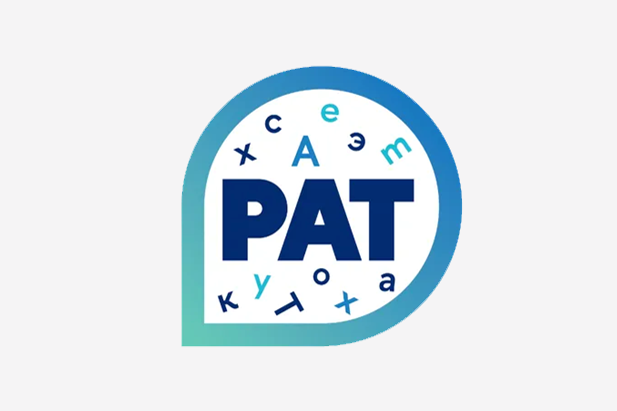HSE Scientists Develop Application for Diagnosing Aphasia

Specialists at the HSE Centre for Language and Brain have developed an application for diagnosing language disorders (aphasia), which can result from head injuries, strokes, or other neurological conditions. AutoRAT is the first standardised digital tool in Russia for assessing the presence and severity of language disorders. The application is available on RuStore and can be used on mobile and tablet devices running the Android operating system.
Approximately 450,000 stroke cases are reported annually in Russia, with about one-third of patients developing aphasia. Aphasia is an acquired language disorder. A person with aphasia may struggle to understand others, speak, read, or write. Aphasia can result from brain damage caused by stroke, head injury, or tumour removal. Physicians diagnose aphasia based on clinical symptoms and neuropsychological assessment data. Timely diagnosis of aphasia is crucial, as working with a speech therapist and neuropsychologist can significantly accelerate language recovery and improve quality of life.
Researchers at the HSE Centre for Language and Brain have developed a standardised digital tool called AutoRAT (from the Russian Aphasia Test), enabling the detection of aphasia and the assessment of its severity. When creating materials for the application, the developers considered not only the linguistic characteristics of the words, sentences, and texts included in the stimulus set but also psycholinguistic factors. These factors included, for example, the age at which the words were learned, their frequency of use, how easily a person can visualise an object associated with the word, and the complexity of images related to specific stimuli. The AutoRAT application allows diagnostics to be completed in just 60 minutes, providing accurate data for the development of a rehabilitation programme.
The battery of language tests includes 13 different tasks that assess the preservation of all key linguistic levels: phonological, lexico-semantic, syntactic, and discourse. These tasks help identify deficits in comprehension, production, and repetition of speech, provide information about the overall severity of language disorders, and allow comparison of results with age-based norms.
Language comprehension tasks, such as distinguishing sounds and understanding words, sentences, and texts, are automatically processed within the app. To obtain results for tasks involving speech production and repetition—such as naming objects and actions, constructing sentences and stories from drawings, and repeating words and sentences—a detailed manual evaluation system was developed for the user. This allows for the identification of all aspects of language disorders in each participant.
Individual participant profiles are saved in the application for further analysis of the results. AutoRAT enables tracking of the dynamics of language recovery, allowing for the assessment of treatment effectiveness, which is crucial for future prognosis and selecting an appropriate rehabilitation programme. All results are available for download in table format, making them convenient for research purposes.
AutoRAT will be a valuable tool for speech therapists, neuropsychologists, researchers, and clinical specialists. Additionally, it will be useful for healthcare institutions, students, and teachers in medical and linguistic fields, developers of rehabilitation programmes, and research centres focused on cognitive and linguistic processes.
'We aimed to create a tool that would not only help specialists diagnose aphasia but also provide a comprehensive picture of language disorders. AutoRAT is a step toward more precise and personalised patient rehabilitation. This tool combines a strong theoretical linguistic foundation with practical advancements in the field of speech therapy. Our tool enables a detailed description of the core language deficit, making the diagnosis of aphasia even more accurate,' comments Olga Buivolova, one of the project participants and Research Fellow at the HSE Centre for Language and Brain. 'It sets new standards by integrating advanced scientific approaches with practical effectiveness. AutoRAT transforms the aphasia assessment process, making it more convenient, accurate, and highly efficient.'
See also:
HSE Psycholinguists Launch Digital Tool to Spot Dyslexia in Children
Specialists from HSE University's Centre for Language and Brain have introduced LexiMetr, a new digital tool for diagnosing dyslexia in primary school students. This is the first standardised application in Russia that enables fast and reliable assessment of children’s reading skills to identify dyslexia or the risk of developing it. The application is available on the RuStore platform and runs on Android tablets.
Physicists Propose New Mechanism to Enhance Superconductivity with 'Quantum Glue'
A team of researchers, including scientists from HSE MIEM, has demonstrated that defects in a material can enhance, rather than hinder, superconductivity. This occurs through interaction between defective and cleaner regions, which creates a 'quantum glue'—a uniform component that binds distinct superconducting regions into a single network. Calculations confirm that this mechanism could aid in developing superconductors that operate at higher temperatures. The study has been published in Communications Physics.
Neural Network Trained to Predict Crises in Russian Stock Market
Economists from HSE University have developed a neural network model that can predict the onset of a short-term stock market crisis with over 83% accuracy, one day in advance. The model performs well even on complex, imbalanced data and incorporates not only economic indicators but also investor sentiment. The paper by Tamara Teplova, Maksim Fayzulin, and Aleksei Kurkin from the Centre for Financial Research and Data Analytics at the HSE Faculty of Economic Sciences has been published in Socio-Economic Planning Sciences.
Larger Groups of Students Use AI More Effectively in Learning
Researchers at the Institute of Education and the Faculty of Economic Sciences at HSE University have studied what factors determine the success of student group projects when they are completed with the help of artificial intelligence (AI). Their findings suggest that, in addition to the knowledge level of the team members, the size of the group also plays a significant role—the larger it is, the more efficient the process becomes. The study was published in Innovations in Education and Teaching International.
New Models for Studying Diseases: From Petri Dishes to Organs-on-a-Chip
Biologists from HSE University, in collaboration with researchers from the Kulakov National Medical Research Centre for Obstetrics, Gynecology, and Perinatology, have used advanced microfluidic technologies to study preeclampsia—one of the most dangerous pregnancy complications, posing serious risks to the life and health of both mother and child. In a paper published in BioChip Journal, the researchers review modern cellular models—including advanced placenta-on-a-chip technologies—that offer deeper insights into the mechanisms of the disorder and support the development of effective treatments.
Using Two Cryptocurrencies Enhances Volatility Forecasting
Researchers from the HSE Faculty of Economic Sciences have found that Bitcoin price volatility can be effectively predicted using Ethereum, the second-most popular cryptocurrency. Incorporating Ethereum into a predictive model reduces the forecast error to 23%, outperforming neural networks and other complex algorithms. The article has been published in Applied Econometrics.
Administrative Staff Are Crucial to University Efficiency—But Only in Teaching-Oriented Institutions
An international team of researchers, including scholars from HSE University, has analysed how the number of non-academic staff affects a university’s performance. The study found that the outcome depends on the institution’s profile: in research universities, the share of administrative and support staff has no effect on efficiency, whereas in teaching-oriented universities, there is a positive correlation. The findings have been published in Applied Economics.
Physicists at HSE University Reveal How Vortices Behave in Two-Dimensional Turbulence
Researchers from the Landau Institute for Theoretical Physics of the Russian Academy of Sciences and the HSE University's Faculty of Physics have discovered how external forces affect the behaviour of turbulent flows. The scientists showed that even a small external torque can stabilise the system and extend the lifetime of large vortices. These findings may improve the accuracy of models of atmospheric and oceanic circulation. The paper has been published in Physics of Fluids.
Solvent Instead of Toxic Reagents: Chemists Develop Environmentally Friendly Method for Synthesising Aniline Derivatives
An international team of researchers, including chemists from HSE University and the A.N. Nesmeyanov Institute of Organoelement Compounds of the Russian Academy of Sciences (INEOS RAS), has developed a new method for synthesising aniline derivatives—compounds widely used in the production of medicines, dyes, and electronic materials. Instead of relying on toxic and expensive reagents, they proposed using tetrahydrofuran, which can be derived from renewable raw materials. The reaction was carried out in the presence of readily available cobalt salts and syngas. This approach reduces hazardous waste and simplifies the production process, making it more environmentally friendly. The study has been published in ChemSusChem.
How Colour Affects Pricing: Why Art Collectors Pay More for Blue
Economists from HSE University, St Petersburg State University, and the University of Florida have found which colours in abstract paintings increase their market value. An analysis of thousands of canvases sold at auctions revealed that buyers place a higher value on blue and favour bright, saturated palettes, while showing less appreciation for traditional colour schemes. The article has been published in Information Systems Frontiers.



